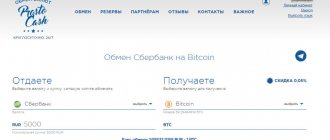Electronic payment systems (EPS) allow you to make purchases, as well as sell goods and pay for various services via the Internet. The activities of these organizations in our country are regulated by the legislation of the Russian Federation, in particular the law “On the National Payment System”. In many cases, using an electronic wallet is much more convenient and safer than using paper bills, which is why electronic payment systems are becoming increasingly popular. In this article we will talk about what EPS are and what advantages they have, and also consider the features of several popular electronic payment systems in Russia.
What is a payment system
Generally speaking, a payment system is a set of rules, processes and equipment through which money is circulated between people and organizations.
This complex should ensure uninterrupted, safe, reliable and efficient processes for transferring money on conditions common to all participants. Most often, such a system is independent - it does not belong to any financial organizations - and is engaged only in conducting monetary transactions. In a narrower sense, this term often refers to the bank card circulation system. This system includes the various types of cards themselves, tools for issuing and maintaining them, and rules for their use. The payment system can operate independently of other organizations or through intermediaries - most often, banks act in their role.
According to the volume of distribution, payment systems are divided into international and local. The international one covers several countries and cooperates with many organizations within these countries. Local usually does not extend beyond the boundaries of one country or one organization.
In addition to bank cards, the payment system can use other instruments, such as paper checks, electronic wallets, blockchain or options.
PAYMO
The PAYMO payment service has existed since 2014. The company's headquarters is located in Luxembourg, with additional offices in Russia, Kazakhstan and Uzbekistan. It specializes in developing payment solutions for financial and government institutions, retail and housing and communal services companies.
In numbers:
- More than 100 utility service providers cooperate with the company.
- More than 30 thousand successful transactions per day.
- Payment conversion - 99%.
Commission:
The rate is flexible, depends on the type of activity and turnover, the lower limit is 0.6%.
Clients:
Severstal, Odnoklassniki, Peak Group, SOGAZ.
Service features:
- There are no subscription or connection fees.
- A convenient personal account with ample opportunities for tracking trends and statistics: sales dynamics, customer activity, average bill, payment preferences.
- Individual customization of transaction register formats, the function of mass automatic invoicing, holding funds, automatic payments, payments to cards, customization of the payment page and one-click payments are available.
- There is a comprehensive solution for 54-FZ for clients. You will only need to rent a cash register.
- PAYMO develops mobile, tablet and web applications for banks and other organizations.
From the history of bank card payment systems
The first payment card system was Diners Club, which appeared in 1950 in the USA. That same year, the system issued the first credit cards in history. Moreover, the company was not a bank, but a kind of club, which included people interested in the idea of paying for their expenses at any time without cash in hand.
The first Diners Club credit cards were intended to pay for meals in restaurants. They were paper and were, in fact, a document confirming the solvency of the owner. Once a month, club members received statements of accounts paid in this way, for which they then had to make payments.
Bank cards themselves appeared later, and initially there was no unified system for issuing and servicing them. Each bank issued its own cards, which could only be used within it. Long Island Bank, a small bank from New York, was the first to issue its bank cards in 1951.
The first interbank system was the Interbank Card Association (future MasterCard), which appeared in 1966. At the same time, American Express in the USA, Eurocard in Europe and JCB in Japan are actively developing.
At the same time, technologies for making payments and storing information about them developed. The cards themselves changed from paper to plastic, they were equipped with magnetic stripes, and later - electronic chips that store account information. Computer systems began to be used to process transactions. The development of the Internet has made it possible to carry out all real-time transactions online.
In the USSR, their own payment systems based on bank cards hardly developed. Foreign cards were available only to a very narrow circle of people and were not used everywhere. VAO Intourist and Vnesheconombank were responsible for accepting and servicing cards. In 1988, Vnesheconombank became the first Soviet bank to issue a card in a foreign payment system. By the end of the 20th century, Visa and Europay (later included in MasterCard) were the most active in our market.
The first domestic bank card system was STB, which was created by Stolichny Bank in 1992. However, it was not widely used and is no longer used. In 1994, the Golden Crown appeared and became more popular. Now it is better known for money transfers, and bank cards are less common in it.
In 2012, the PRO100 system appeared, which was developed by Sberbank based on MasterCard technologies. Cards of this system were supposed to combine a payment instrument and an identity document. An attempt to create such a tool was not very successful, and, despite a certain prevalence, the system was discontinued by 2022. It was replaced by the MIR system.
What functions do payment systems perform?
The bank card payment system performs the following functions
- Issues licenses to issue plastic cards using system-owned technologies and symbols for issuing banks
- Grants the right to conduct card transactions for acquiring banks
- Protects patents and property rights
- Develops rules and regulations for card transactions
- Ensures uninterrupted operation of national and international payments and automated systems
- Processes financial data and transfers commission payments to system participants
- Analyzes system operation
- Develops new payment technologies
- Conducts marketing events for cardholders, promotes its products on the market and is engaged in its advertising
Uniteller
The history of Uniteller is closely connected with Unitecsys, a software developer for banks and self-service. A separate payment service developed from an internal Unitecsys project and entered the market as an independent provider in 2008.
In numbers:
- Companies from more than 40 industries cooperate with Uniteller.
- More than 3,500 stores and portals use the service.
- About 12 million transactions per month.
Commission:
depends on the company’s field of activity, turnover, acquiring type and payment solution.
- With a turnover of less than 1 million rubles per month, the Uniteller commission is 2.9%.
- 1–3 million rubles per month - 2.7%.
- For volumes exceeding 3 million rubles, the tariff is calculated individually.
- For enterprises operating in the housing and communal services sector, Uniteller offers a rate starting from 1.6%.
Clients:
Rostelecom, Ile de Beaute, Mosgortrans, Decathlon.
Service features:
- Works with the maximum number of payment methods, including fuel cards, NFC devices, electronic money, Apple Pay, MasterPass, Samsung Pay.
- There are products for pharmacies and clinics, in particular, providing the ability to remotely pay for services to people in quarantine or self-isolation.
- In August 2022, Uniteller introduced a new product - electronic travel certificates in partnership with the tour operator Space Travel.
- There are special offers for the following industries: aviation and tourism, transport, housing and communal services, government portals, banks.
How does the bank card payment system work?
System participants
At the heart of any payment system is a processing center - an organization or its division that ensures technical interaction between participants in this system. Typically, such centers are created at large banks. For example, Sberbank and VTB have them. In order for a processing center to operate in the system, it must obtain permission and a license from it. In Russia, the center must also undergo additional verification by the FSB.
Other important participants are issuers - organizations that issue and service cards, and acquirers, which organize the acceptance of cards for payment. In our country, banks usually become issuers and acquirers. The issuer is obliged to issue cards, open and service accounts linked to them. The acquirer organizes the acceptance of card payments and services at ATMs.
The same bank can be both an issuer and an acquirer. For interaction between different banks, settlement and clearing centers are created. To conduct relevant operations, all these organizations need equipment and permissions from the payment system.
Finally, the system includes bank card holders - individuals and legal entities who use them. The owner of a bank card always remains the issuer that issued it. This also includes organizations that use the services of acquirers to accept payments for their goods and services using bank cards.
The head office exercises control over all participants. He establishes general rules for participation in the system, organizes the development of technologies used in it, and owns the rights to the trademark.
The operation of payment systems in Russia is determined by Federal Law No. 161-FZ “On the National Payment System”. The Central Bank supervises their work. All information about the systems operating in the country is entered into a separate register.
Principle of operation
When using a card - for example, when paying for purchases - the holder confirms the transaction, and the acquirer reads the card information and sends a request to the processing center. The center processes the request and, if it finds such a card in the system, transmits the information to the issuer. The issuer checks the status of the card account and, if there is enough money in this account, blocks the required amount in the account and sends the corresponding request through the processing center to the acquirer. He confirms the fact of payment, informs the cardholder and the store where the purchase was made.
Later, a list of completed payment transactions is created, which is transmitted through the acquirer to the processing center. It generates a payment register and transmits messages to issuers, acquirers and the clearinghouse. Based on the message, the clearing center sends a request to the issuer, which debits the payment amount and, through processing, transfers it to the acquirer, and the acquirer – to the organization where the purchase was made. The acquirer and issuer inform their clients about successful transactions.
Other operations, such as money transfers between cardholders and cash withdrawals from an ATM, are organized in a similar way. Now all these operations work in real time and fully automatically. From a payment request to the debiting of money, it can take from a few seconds to one day.
Recommended for you
All about the MIR payment system and its bank cards
Servicing of Visa and MasterCard cards has finally stopped in Crimea
MasterCard is suspected of transmitting customer purchase data to Google
Within the payment system, all transactions are carried out in one currency. The issuer and acquirer can use any currencies. If the issuer and acquirer operate in the same currency, then there is no need to exchange money additionally. If they use different currencies, then the payment or transfer amount is converted from the issuer’s currency first to the system currency, and then to the acquirer’s currency.
For example, a Visa card holder with a ruble account wants to pay for a purchase in Thailand. During the payment process, the amount that is debited from your account is exchanged first into dollars - the main currency in Visa - and then into Thai baht. The exchange rate depends on the conditions of the issuer and acquirer.
A separate record is created for each card, which contains the name of the issuer that issued it, the type and status in the system, information about the holder and other information. Each card is assigned a unique number by which it is matched to the record. The number is always printed or embossed on the front.
Systems are constantly working on the speed, reliability and safety of all operations
Safety
According to the Ministry of Internal Affairs, for 6 months of 2022, the number of cases of fraud using electronic means of payment increased 8 times compared to 2022. And fraud in receiving payments related to electronic payments increased by 27.6% over the same period. Therefore, legislators are constantly putting forward initiatives to improve security measures when using Internet wallets.
In mid-summer 2022, the Federation Council of the Russian Federation approved a bill prohibiting anonymous replenishment of virtual wallets. Experts predict that if the law is adopted, it will have a bad effect on the market.
Owners of electronic money and online banking are required to independently monitor the security of their data, in addition to relying on protection within the system. It is important:
- do not transmit information about login, password, code word, key request and other identification methods provided in the system to anyone;
- look carefully at the address field of the site where the payment takes place; at the beginning of the line on protected resources there is a lock icon;
- systematically check the protection of your laptop, tablet, computer and smartphone for viruses and malware;
- do not voice or forward to anyone the code sent by the payment system to confirm payment;
- If you have concerns about fraud, contact technical support or the payment system security department.
By following these rules, you can avoid most attacks on your money that is stored inside electronic payment systems or in bank accounts.
5 / 5 ( 2 voices)
about the author
Klavdiya Treskova - higher education with qualification “Economist”, with specializations “Economics and Management” and “Computer Technologies” at PSU. She worked in a bank in positions from operator to acting. Head of the Department for servicing private and corporate clients. Every year she successfully passed certifications, education and training in banking services. Total work experience in the bank is more than 15 years. [email protected]
Is this article useful? Not really
Help us find out how much this article helped you. If something is missing or the information is not accurate, please report it below in the comments or write to us by email
Bank card payment systems in Russia and their features
The most common international payment systems in our country are Visa and MasterCard. Cards of these systems are issued by almost all banks; they are most often issued and accepted almost everywhere. The national payment system MIR is less widespread - mainly due to the transfer of pensioners and public sector employees to it. Other systems - American Express, UnionPay, JCB and others - are found and serviced much less frequently.
Let's consider the features of each payment system separately.
Visa
Visa is the largest international payment system; it operates in more than 200 countries around the world.
The system was created in 1958 by a large American bank, Bank of America. At that time it was called BankAmericard. By the early 80s of the last century, it absorbed a number of other American payment systems and entered the world market. Then it changed its name to Visa. By the end of the 80s, the system came to the USSR. The first Soviet bank to join it was Sberbank. At the end of the 20th century, the system was one of the first to introduce chip cards (initially they were called smart cards).
Visa, together with other systems, has developed the international EMV standard, which establishes a uniform procedure for conducting card transactions.
At the beginning of the 21st century, Visa became the most popular payment system in our country. In addition, for a long time, Russian turnover in it accounted for almost half of the total volume of influence of the system in the Eastern European region.
The Visa payment system provides all main types and categories of bank cards and uses a variety of tools for making payments using them. The main currency in the system is the US dollar. All cards are chip or magnetic chip. Contactless payment using PayWave technology is often available to them. To protect payments, the CVV2 security code and payment confirmation with a PIN code or 3D Secure SMS password are used.
Visa's headquarters are located in the United States in Foster City, California. The company's CEO since 2016 is Alfred F. Kelly Jr. The main settlement center of the payment system in Russia is VTB Bank.
In Russia, almost all banks issue credit and debit cards of different status categories in this system. They are accepted for payment at all retail outlets where cashless payments are available, including on the Internet. The table shows the main types of cards in the Visa system and examples on the Russian market:
| Name | Card status | Examples |
| Visa Electron | Electronic | Express (Vanguard) - debit |
| Visa Classic | Classical | VostOk (Eastern Bank) - debit, Classic (Sberbank) - debit and credit, 100 days without interest (Alfa-Bank) - credit |
| Visa Gold | Golden | Smart card (Gazprombank) - debit and credit, All inclusive (Fora-Bank) - debit and credit, 120 days (Otkritie) - credit |
| Visa Platinum | Platinum | More (BCS Bank) - debit, Platinum (Avangard) - debit and credit, Emotion (Ak Bars) - credit |
| Visa Infinite | Premium, elite | Individual (Freedom Finance) - debit, Infinite (Vanguard) - credit |
| Visa Signature | Premium, elite | Alfa Travel (Alfa-Bank) - debit and credit, Intesa Magnifica (Intesa) - debit, Premium (Sberbank) - credit |
The system has other categories of cards - virtual Virtuon, Payroll with an insurance program included in it, Cash, which is intended only for cash withdrawals and small expenses, and some others. However, they are not common in Russia.
In the system's own hierarchy, Infinite cards have a higher status than Signature. Russian banks, on the contrary, position Signature as a more status product. Therefore, if you need to get more additional privileges, then apply for an Infinite card.
MasterCard
The second largest and most popular payment system, both in the world and in Russia.
The system appeared in 1966 as an alternative and competitor to BankAmericard. Until 1979 it was called Interbank Card Association and Master Charge. In 1968, the system merged with the European Eurocard and a number of other systems. In 1990, the company organized the Maestro service - a separate system in which simple debit cards are issued. In 2002, Europay, which was present in Russia, became part of MasterCard. In our country, the system gained popularity in the mid-00s of our century.
MasterCard was the first to introduce status categories for bank cards and set the main levels for them - classic, gold, platinum. He was also the first to issue cards that support contactless payment - a trial launch took place in 2003, and mass production began in 2006.
Like Visa, MasterCard has all the necessary means to organize non-cash payments. It offers credit and debit cards of different status categories. The system issues chip and magnetic chip cards, including those with support for PayPass contactless technology. Payments are protected by CVC code, PIN code and 3D Secure SMS passwords. The main currencies in MasterCard are US dollars and euros. Premium card holders have access to the Priceless Cities discount program, which includes stores and establishments around the world.
The central office of the MasterCard payment system is located in Harrison, New York. The president of the company since 2010 is Ajaypal Singh Banga. The settlement center of the system in Russia is Sberbank
MasterCard credit and debit cards are issued by many Russian banks and are accepted for payment almost everywhere. Examples of proposals for such cards are given in the table:
| Name | Card status | Examples |
| MasterCard Maestro | Electronic | Express (Avangard) - debit, Narodnaya (Center-Invest) - debit |
| MasterCard Standard | Classical | Capital (Rosselkhozbank) - debit, Classic (Sberbank) - debit and credit, MTS Money Zero (MTS Bank) - credit |
| MasterCard Gold | Golden | Simple income (Loko-Bank) - debit, Gold (Sberbank) - debit and credit, 110 days (Raiffeisenbank) - credit |
| MasterCard Platinum | Platinum | Capital Platinum (Rosselkhozbank) - debit, 110 for everything (Loko-Bank) - credit, Platinum (Russian Standard) - credit |
| MasterCard World | Premium | Tinkoff Black - debit, Alfa-Card (Alfa-Bank) - debit, Tinkoff Platinum - credit |
| MasterCard World Black Edition | Premium, elite | Privilege (Union) - debit and credit, Premium (Sberbank) - credit, Travelpass (Credit Europe Bank) - credit |
WORLD
The Russian national payment system, which appeared not so long ago and is currently only gaining momentum.
MIR was founded in 2015. The reason for this was sanctions from international payment systems, which stopped cooperation with some Russian banks and stopped working in Crimea. Work on MIR began in 2014, the first map in it was released in the winter of 2015.
By the second half of 2022, almost all Russian banks are issuing and servicing cards in the MIR system. It is active in almost all regions and cities of the country. In the summer of the same year, pensioners, state employees and civil servants began to be transferred en masse to this system. It has entered into agreements with MasterCard, UnionPay and JCB to issue co-branded cards - such cards can be valid within two systems at once, so they are also accepted abroad.
To operate the national payment system, both our own developments and the experience of foreign analogues are used. The main currency in the system is rubles. All cards are chip or magnetic chip, some offer contactless payment. MirAccept technology is responsible for Internet security. In the fall of 2022, we launched our own bonus program. In winter, support for MIR cards from some banks appeared in Samsung Pay
MIR belongs to JSC National Payment Card System (NSCP), which is also its settlement center. The headquarters of NSPK is located in Moscow. General Director - Vladimir Komlev.
Basically, this system issues debit cards of different status categories. Examples of offers from different Russian banks are collected in this table.
| Name | Card status | Examples |
| WORLD | Electronic, classical | Honorary Pensioner (Uralsib) - debit, Rosneft (Rosselkhozbank) - debit and credit, Pyaterochka (Post Bank) - debit and credit |
| WORLD Classical | Classical | Active (Rosgosstrakh Bank) - debit, Mir (Zenith) - debit and credit, Amur Tiger (Rosselkhozbank) - debit and credit |
| MIR Premium | Premium | Tinkoff Black - debit, Multicard (VTB) - debit, World of Opportunities (Russia) - credit |
| WORLD Supreme | Premium, elite | Multicard Privilege (VTB) - debit, Supreme (Russian Standard) - credit |
| MIR-Maestro | Classic co-branding | Multicard (VTB) - debit, Mir (Gazprombank) - debit |
| MIR-UnionPay | Classic co-branding | Co-badging (Rosselkhozbank) - debit |
| MIR-JCB | Classic co-branding | Mir (Gazprombank) - debit |
You can read about the experience of using the MIR card in this article.
American Express
One of the oldest payment systems in the world, it is widely used in the United States.
American Express was founded in 1850, initially transporting valuable cargo. She later switched to money orders and traveler's checks. The system issued its first payment card in 1958, from which time it began to be very active in financial services.
American Express came to Russia back in 1887, when it offered money transfers to residents of our country. In 1969, the USSR began to accept cards for payment using this system, mainly in shops and establishments serving foreign tourists. Currently, the key partner of American Express in Russia is Russian Standard Bank.
The system focuses on the quality of its services rather than popularity. Therefore, its cards are distributed among a fairly limited circle of people, mainly travelers and wealthy people. All its clients benefit from benefits such as a travel insurance program, discount program and travel management service.
Basically, AmEx issues credit cards of different status categories. The main currency in the system is the US dollar. The system also has its own ExpressPay contactless payment technology, but cards with it are not issued in our country.
American Express is headquartered in New York. The general director of the system is Kenneth Chenault, who has been in his position since 2001. The settlement center of the payment system in Russia belongs to Russian Standard Bank.
The table shows examples of American Express cards that can be issued in Russia:
| Name | Card status | Examples |
| American Express | Classical | American Express (Russian Standard) - credit |
| American Express Gold | Golden | American Express Gold (Russian Standard) - credit |
| American Express Platinum | Platinum | American Express Platinum (Russian Standard) - debit and credit |
UnionPay
A large payment system from China, operating in 157 countries around the world.
The system appeared in 2002, it was created by the People's Bank of China. Subsequently, it began to spread in East Asian countries, and in 2007 it came to Russia. In 2013, some banks in our country began issuing cards in this system - Gazprombank, Lightbank and Russian Standard were among the first. By 2016, in terms of turnover, the system reached the same level as Visa and MasterCard.
Union Pay uses the same technologies as international payment systems. The system offers credit and debit cards of all major status categories. The main currencies are the yuan in China and the US dollar in other countries. UnionPay's contactless technology is called QuickPass, but cards with it are rarely issued outside of China.
The Chinese payment system does not participate in international sanctions and therefore can operate in Crimea. But there are very few retail outlets where such cards are accepted for payment in Russia.
UnionPay's headquarters is located in Shanghai. The company's general director, Shi Wenchao, has been working there since its founding. UnionPay settlement center in Russia is JSCB Bank of China (Elos).
The table below shows examples of Union Pay cards that are issued in Russia:
| Name | Card status | Examples |
| UnionPay Classic | Classical | Personal (Rosselkhozbank) - debit, Credit (Bank of St. Petersburg) - credit |
| UnionPay Gold | Golden | Eastern (Primsotsbank) – debit |
| UnionPay Platinum | Platinum | Platinum (Zenith) - debit and credit |
| UnionPay Diamond | Premium, elite | UnionPay Diamond (Solidarity) - debit |
Robokassa
Robokassa is one of the first payment systems in Russia. The service has been on the market since 2002, and during this time more than 120 thousand projects began working with it. It is noteworthy that Robokassa operates virtually all over the world - 252 countries are available to accept payments.
In numbers:
- More than 121 thousand client companies.
- The number of registered payers exceeds 3 million.
- 4 comfortable solutions for business that ensure compliance with the requirements of 54-FZ.
Commission:
RoboKassa offers 4 tariffs for legal entities and individual entrepreneurs.
For individuals, the commission starts from 7%, and the first payment can be accepted within 24 hours after registration thanks to simple and quick setup.
Service features:
- Free placement of goods on Robo.market, the service’s own trading platform. Allows small businesses to instantly begin accepting payments in over 30 ways.
- Robochki - the ability to connect to services for the fiscalization of payments without additional payment for the rental and purchase of cash registers in accordance with 54-FZ.
- Availability of a tool for organizing sales on Instagram with the creation of your own full-fledged online point of sale.
- Simple and fast connection, reliable technical support.
Unlike Yandex.Checkout, Robokassa is more likely designed for medium and small businesses and is suitable as a reliable solution for clients with a turnover of up to 5 million rubles.
Which payment system to choose?
Which system you choose will determine where and how you can use your card. Each system has its own characteristics, such as contactless payment or its own discount programs, and its own pros and cons. This parameter determines the main currency in which some transactions will be carried out - for example, paying for purchases abroad.
Typically, the systems in which the card is issued are always indicated on the offer page of the bank. If the card is available in several variations at once, then you can select the one you need during the registration process. If you did not find the information, then you can clarify this issue with the bank support service.
Let's consider in what situations certain cards will be useful.
- The golden mean is a Visa or MasterCard card. It is quite universal; it can be used to pay for purchases in any stores or to withdraw cash. It will be accepted for payment not only in Russia, but also abroad. At the same time, Visa is more suitable for the USA, and MasterCard is more suitable for Europe.
- MIR is more suitable for those who rarely travel outside of Russia. It has everything you need for comfortable use within the country. You can also apply for a MIR card if you live or often vacation in Crimea - only the national payment system works there
- Cards from other systems are suitable for more limited use. American Express is useful for travelers, and UnionPay is useful for those who work or vacation in China. They can be designed as main or additional
All the main conditions of the card - issue, maintenance, limit size for a credit card or interest on the balance for a debit card, as well as possible bonuses and cashback depend, to a greater extent, on the bank that issued it. You can select a credit or debit card with suitable conditions in the system that interests you on our website.
Questions and answers
Both Visa and MasterCard provide credit and debit cards of various statuses. You can use them to pay for purchases in any stores and online. The systems maintain a high level of operational security. PayWave and PayPass technologies for contactless payment are compatible with each other.
The differences only appear when traveling to other countries and purchasing a premium card. In Russia, both systems retain approximately equal influence. Abroad, Visa is more active in the USA, Australia, America and Southeast Asia, MasterCard - in Europe and Africa. The first system conducts settlements in dollars, the second - in dollars and euros.
Both payment systems offer different privilege programs for status card holders. MasterCard has discount programs and special offers from partners in major cities around the world. Visa provides medical and legal support, concierge service, purchase protection and others. The higher the card status (gold, platinum, premium or elite), the more privileges are available.
The security code is placed on the back of the bank card. It is three-digit for Visa, MasterCard and MIR cards, and four-digit for American Express. This code is used to confirm the authenticity of the card when paying for purchases online. The security code is not written into the chip or on the card strip, is not displayed on the receipt, and cannot be changed like a PIN code.
When used within Russia, the MIR card is no different from international cards. It is accepted in many retail outlets throughout the country, including in Crimea. Many MIR cards from major banks support contactless payment. The system supports its loyalty program with cashback for purchases from partners.
MIR does not depend on external factors - with a possible tightening of sanctions, the system will continue to work.
Only MIR co-branded cards, which are issued jointly with international payment systems, work abroad. Also, the system does not yet have its own program of privileges for premium card holders.
Maybe. There are cards that are issued in two payment systems - usually international and local. Such cards are called co-branded. The processing center of each system that participates in the issue identifies the card within the system as “its own”. A co-badged card can be identified by the icons of the two systems on the front side.
For example, cards issued by MIR together with Maestro, UnionPay and JCB are co-branded.
From July 1, 2022, all budget payments (including pensions and salaries of budget employees) are paid only to MIR cards. However, you can apply for an additional card in a foreign payment system (for example, Visa) and transfer money to it. MIR cards for pensioners and state employees usually have free or low-cost service, so you can keep any amount of money on the card.
You also don’t have to apply for a MIR card if you receive budget payments to an account not linked to cards. Payments can be transferred to such an account upon application to the Pension Fund. After this, you will be able to freely issue any cards under standard conditions.
Both the chip and the strip are needed to store information on the card and interact with terminals and ATMs. The chip is more reliable than the strip and can store more information. Chip cards can support contactless payment.
Payment systems are gradually abandoning magnetic stripes and replacing them with chips - this process is very active abroad. But in Russia, almost all cards are still magnetic chip. Here the strip is needed to work with ATMs of older models, of which there are many in the regions. Instant and gift cards are also often issued without a chip.
The answer will depend on how the person uses the salary card. If he receives money and immediately withdraws it from an ATM, then the payment system can be any. If a person travels abroad or buys goods on foreign websites, then the MIR card will not suit him, since it will most likely not be accepted for payment. The MIR card is also not suitable for those who receive salaries in foreign currency, since this payment system only supports accounts in rubles. Salary cards in this system are issued mainly for employees of budgetary institutions - from 2022 they can no longer use international cards for this.
If it is assumed that the client will travel abroad or buy goods in foreign stores, then you need to choose a Visa or MasterCard card. Visa will conduct transactions in dollars, so it is better to pay with it in the United States and other countries where the national currency is the dollar. MasterCard's base currency is the euro, so it's best to take it with you when traveling to Europe. Otherwise, you will have to pay a double commission for converting from rubles to the base currency of the card, and then to the currency of the country where the purchase takes place. State employees can still issue cards in these systems, but cannot transfer salaries to them.
Most online stores accept cards of any payment system. However, if the client plans to buy goods in foreign stores, then it is better to refuse the MIR card, since in this case it will not be possible to pay with it. The exception is AliExpress: it has been accepting cards in the national payment system since 2017.
- In order to pay for a purchase, the customer inserts or touches the card to the terminal, which checks its activity and connects to the bank, and, if required, enters a PIN code. When paying online, he fills out the payment form (the card number, expiration date, first and last name of the holder, and security code are entered into it) and confirms the operation with a one-time password
- The bank whose device is installed at the seller checks the received data with those that are in the acquiring bank’s database
- If no discrepancies are found, the request is sent to the payment system
- In turn, the system sends a request to the issuing bank in order to find out information about the status of the account card. If the card is valid and there are enough funds in its account, the required amount is transferred to the seller’s account. Otherwise, the issuer will reject the transaction
- The terminal prints two checks, one of which the seller signs and keeps for himself, and the second gives to the buyer
- At the end of the day, all data on completed transactions is sent to the acquiring bank that services the store
CloudPayments
Created in 2014 as a pocket processing for its own needs, CloudPayments quickly became one of the industry leaders, and in 2022 came under the wing of Tinkoff Bank (they started with 55%, and in April 2019 increased the share to 90%). Works with bank cards Visa, MasterCard, Maestro, Visa Electron, Mir.
In numbers:
- More than 1 million payments per day.
- Payment conversion - 98%.
- 11,000 connected partners.
Clients:
Iqos, Papa John's, Puma, Tilda.
Service features:
- More than 50 modules for CMS, including Bitrix24, Opencart, Drupal and E-Autopay.
- Well-thought-out anti-fraud system. CloudPayments is certified according to the international payment system security standard PCI DSS Level 1, using 3D Secure payment security technology and data encryption.
- Multifunctional personal account. Here you can view extended statistics on payments, customers, average bill, transactions using dozens of parameters. Your personal account also makes it possible to manage multiple sites or applications with individual settings.
CloudPayments is a reliable online payment service with a focus on attracting the maximum number of new customers, which sometimes interferes with the flexibility of the approach and careful customization.
Sources
- Wikipedia: Payment system
- Wikipedia: Visa
- Wikipedia: MasterCard
- Wikipedia: American Express
- Wikipedia: UnionPay
- Wikipedia: World (payment system)
- Official website of Visa in Russia
- Official website of MasterCard in Russia
- Official website of American Express in Russia
- Official website of UnionPay in Russia
- Official website MIR
What payment systems do you use? You can share your opinion about the systems and maps in them in the comments.
Recommended for you
- All about the MIR payment system and its bank cards
- How are debit cards different from credit cards?
Yuri Muranov Editor-in-Chief of #VZO. Has been working on the site since its inception. All texts go through Yuri before being posted on the site. Quickly delves into the topics on which authors write, including finance, and monitors the quality of published materials.
(12 ratings, average: 4.1 out of 5)
Criteria for evaluation
- Possibility of high-quality integration of the payment system.
Most players in the market offer package solutions and tariffs for clients. However, it is worth paying attention to whether the provider is ready to adapt to all the company’s “wants” and make the necessary improvements. It is logical to choose a service with wide customization capabilities specifically for your type of business and scale of turnover. - Supported online payment types.
Bank cards, virtual wallets, SMS payment, Apple Pay and Google Pay (and ideally also Samsung Pay), cryptocurrency - the more sources of receiving funds, the less likely it is that the client will leave without finding a suitable payment option. - Commission size.
Here it is important to compare services and look for the most profitable option for the current business turnover. - Safety.
It is worth paying attention to the reliability of the system’s anti-fraud solution, because with the increase in the share of online payments, the number of fraudulent schemes has also increased. - Technical support.
Only prompt and round-the-clock technical support will save you when something goes wrong.
Let's figure out what the top ten leaders offer. At the end of the text there is a comparison table that will further simplify the choice.











